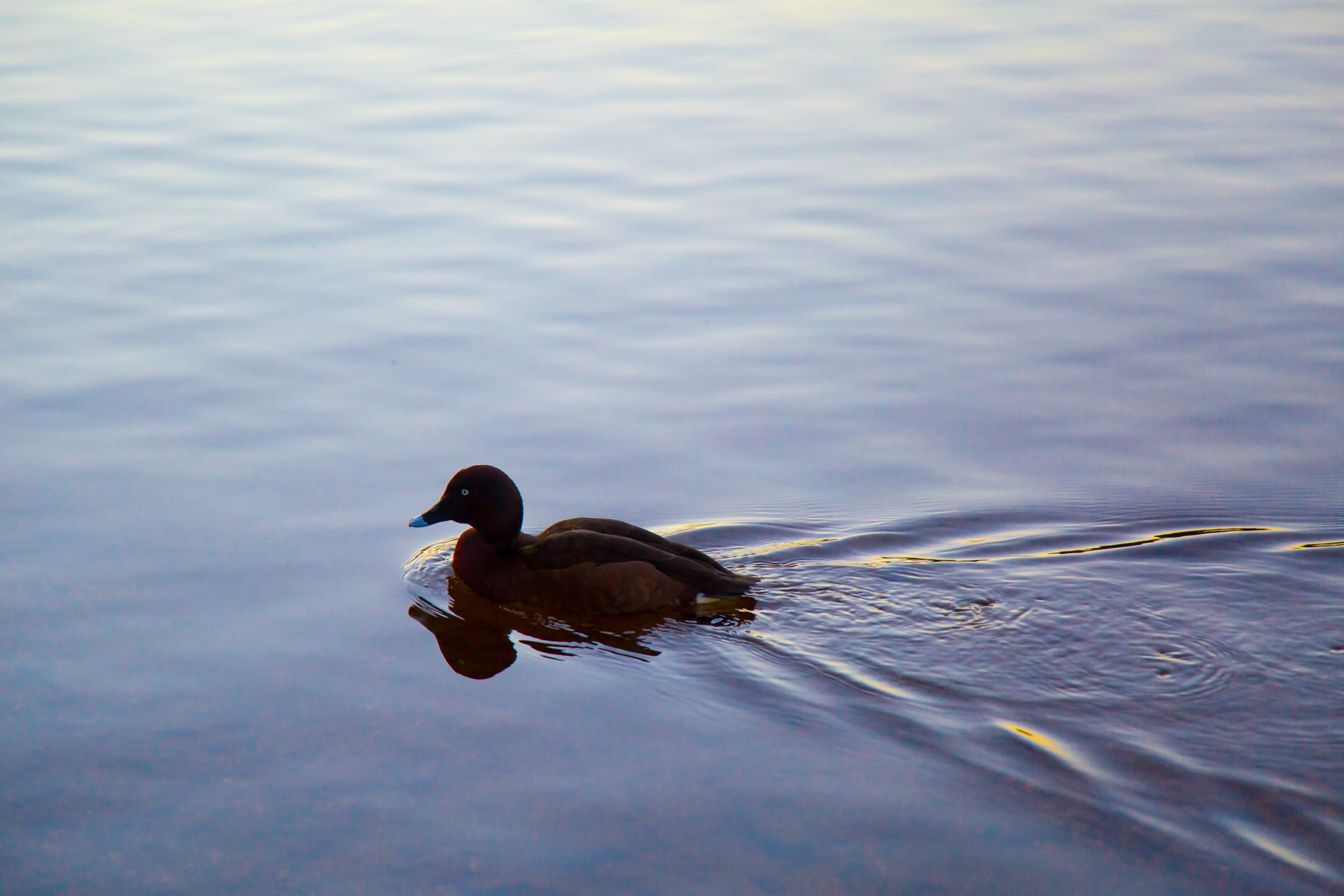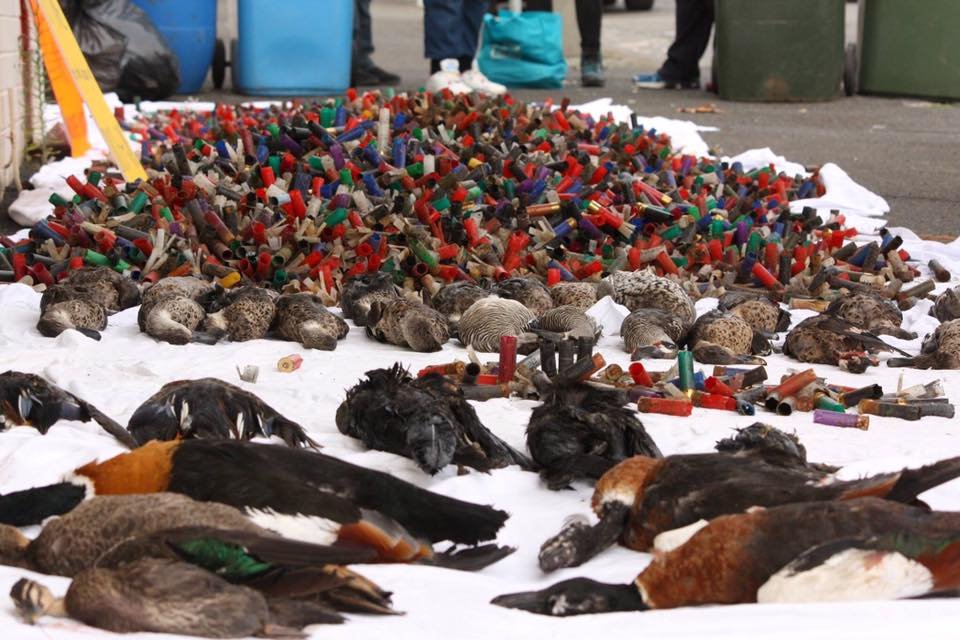
Duck shooting
The senseless killing of Australia’s native waterbirds.
Australia is a land with incredible environmental diversity. An often-overlooked, but critical and beautiful ecosystem, is the wetland. Australia is rich in wetlands of international importance, with 66 listed as such under the Ramsar Convention on Wetlands. Wetlands are home to a plethora of unique wildlife; Australia’s waterbirds in particular are a major ecotourism attraction and international drawcard to birdwatchers. However, the environmental and economic benefits of such industries, which are harmonious and beneficial to the wetlands, seem to be no deterrent to the sanctioned slaughter of thousands upon thousands of native ducks annually, as part of the recreational duck shooting season held in several Australian states.
High capacity for suffering
While one could be forgiven for assuming that hunting wildlife may avoid many of the inhumane practices associated with animal farming, the capacity for suffering of these native species is extremely high, and shows a blatant disregard for the protection of our environment and natural resources.
Thankfully, hunter numbers are declining, and increased public pressure and concern for our native species give hope that the days of duck shooting are numbered. Given the welfare concerns, duck hunting has already been prohibited in Western Australia (1990), NSW (1995), and Queensland (2005).
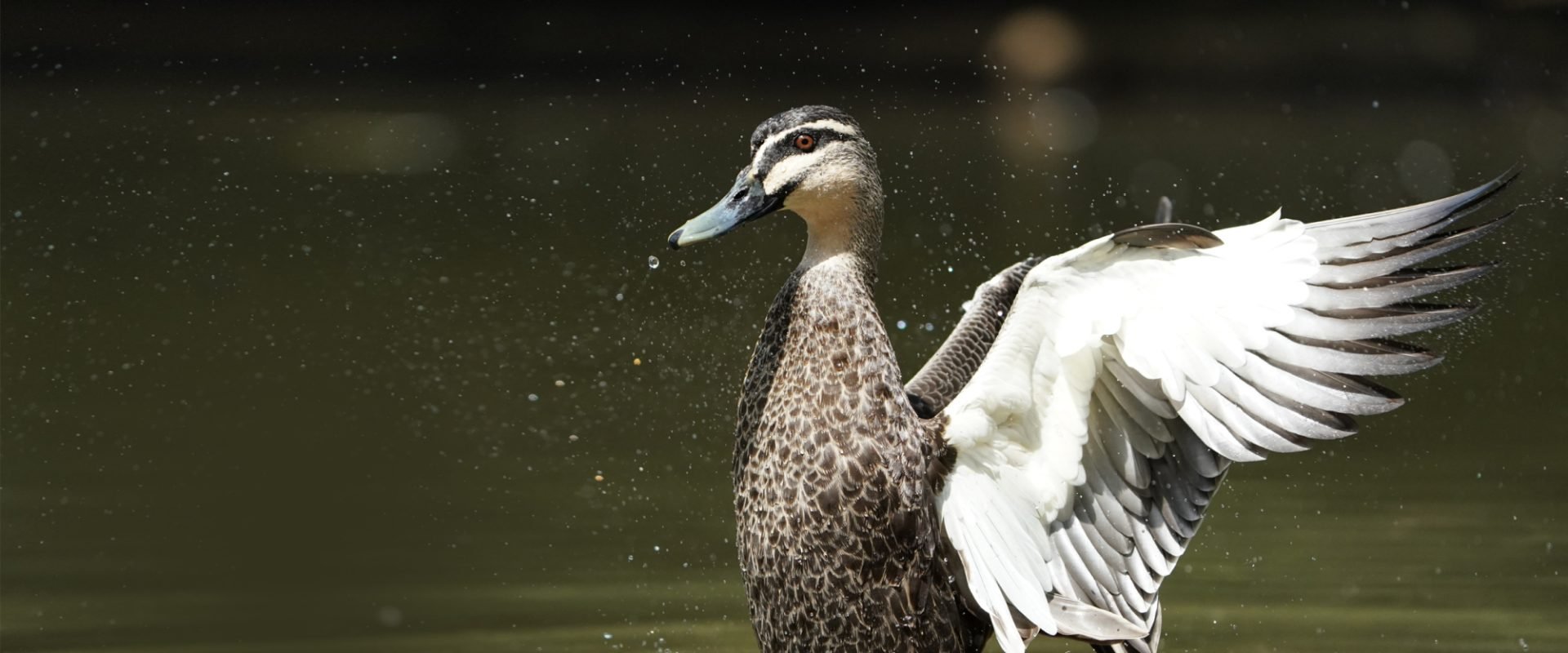
Native species under fire
All ducks which are deemed ‘game’ species in annual duck seasons are native species, not ‘feral’ as seems to be a common misconception, even amongst shooters themselves. Like all native species, ‘game’ ducks are in a delicate balance with the rest of the wetland ecosystem, and help to keep invertebrate numbers in check. Duck species in the firing line in the states and territory that allow a season (Victoria, Tasmania, South Australia and the Northern Territory) include the Pacific Black Duck, Wood Duck, Pink-eared Duck, Grey Teal, Chestnut Teal, Mountain Duck (or Australian Shelduck), and additionally in the Northern Territory only, the Wandering Whistling Duck and Plumed Whistling Duck (pending annual changes/restrictions to species to be hunted). Sadly, target species populations are in imminent danger, with recent eastern survey results indicating they are at the third lowest in 4 decades. In addition, non-target, protected species are frequently found shot, some of which are threatened.
Additionally, an ethically concerning exemption to the duck hunting ban exists in New South Wales, which is known as The New South Wales Native Game Bird Management Program. Through this program, licenced hunters are utilised to kill native ducks on rice farms, with ducks seen as a pest during the rice growing process. While the Ricegrowers Association of Australia recommends the use of non-lethal methods primarily, use of shooters to reduce bird numbers on rice farming properties is commonplace.
Pandering to a minority
Using Victoria as a case example, and utilising statistics from the official Game Management Authority (GMA) document Considerations for the 2022 duck season, there are an estimated 24,330 registered duck hunters in the state.Victoria’s population was estimated to be 6.62 million in 2021, indicating the practice is in place to cater to only 0.37% of the population. Of this, only 32% of registered hunters participated in the 2021 season (7,785 hunters: 0.12% of the population). While the impacts of COVID restrictions likely impacted active hunter numbers, it is noteworthy that only 55% of registered hunters participated in the 2019 season (0.2% of the population). This tiny proportion of the population causes a massive amount of carnage and disarray over the three month annual duck season (pending season length restrictions). The GMA estimate the number of ducks hunted in Victoria in 2021 still came to over 52,500, which is less than one sixth of average numbers (347,000). It is difficult to fathom how and why governments which support a season invest the resources they do into supporting such a small population of voters, who cause the deaths of so many of our native wildlife.
A fate worse than death
Regardless of jurisdiction, recreational hunters are set a ‘bag limit’ for the season: the maximum number of birds they are permitted to kill on any given day. Incidents of shooters not abiding by this law seem to be a near-annual occurrence. The opening of the 2017 season showered the Koorangie Marshes in Victoria with dead birds, with more than 1,000 left uncollected by shooters, more than 100 birds assessed by the voluntary on-site veterinary clinic, and the later discovery by Coalition Against Duck Shooting volunteers of pits concealing more discarded, unharvested birds.
A similar incident occurred near Boort in 2013: the aptly dubbed ‘Box Flat Massacre’. These principles go against the Game Management Authority’s own “ethical hunting” principles,16 displaying the permeated disrespect for birds in hunter culture, and disregard for the environmental and welfare impacts of killing in excess of that allowed by authorities.
The Pegasus report, a 2017 inquiry into the adequacy of the Victorian GMA’s ability to enforce compliance following on from the Koorangie incident, stated “…non-compliance with the game hunting laws is commonplace and widespread, and the GMA is widely perceived by its external stakeholders and its own staff as unable either to ensure compliance with the game hunting laws, or to effectively sanction offenders when those laws are breached.”. This is the death of native birds for no reason other than a ‘cheap thrill’.
A worse fate than outright death, formal hunt tally figures do not take into account the wounding rate of hunted birds. Shotguns, which are used to hunt ducks, operate by projecting a ‘cloud’ of pellets spread over a larger area. A natural consequence of this is that in addition to shooting at the target animal, there will be some inevitable ‘collateral damage’ to surrounding animals, especially if the shot is taken improperly. While the number of birds which are injured but not killed is very hard to accurately calculate, estimates place this number at 25% of birds shot, or 1 in 4. This is compounded by the fact that there is no compulsory accuracy test prior to being awarded a game licence.
No Government funded assistance for injured birds
Contrary to what the public widely assumes, there are no government accommodations in place for dealing with injured wildlife as a result of the season they endorse. Many more birds would suffer unduly if it were not for the effort of volunteer rescuers and veterinary triage teams attending the wetlands. This is a completely self-funded, voluntary effort with no financial input nor support from the government. Sadly, rescue efforts are frequently hampered by the thick reeds in which injured birds attempt to hide from humans, only to go through more protracted suffering.
Even for the birds which are able to completely escape injury, there is no consideration of the behavioural stressors to wild animals of having their environment invaded by the sound of guns, the disruption to their homes by hunters and their dogs, and the potential loss of their bonded mates, with some game and non-game species mating for life and maintaining family groups.
Image: A rescuer from the Coalition Against Duck Shooting carrying an injured bird to be assessed.
Already under pressure:
climate change
Australian waterbirds are already facing severe environmental pressures associated with climate change without the additional pressure of shooting.
Once again returning to Victoria as an example, examining the GMA’s own Considerations 2022 document, the dire environmental conditions Australia is facing are, frankly, beyond terrifying.
While La Niña conditions have brought some much needed relief via rainfall, it is acknowledged that long term wetter conditions are required to adequately recover from drought conditions through 2017 – 2019. Habitat remains fragmented preventing appropriate bird geographic spread, 48% of wetlands surveyed held no waterbirds, and wetland area was only 61% of long term average. The Eastern Australian Waterbird Survey disturbingly highlighted that waterbird numbers are currently 25% of long-term average, and the numbers are the third lowest since surveying began 39 years earlier.
Astoundingly, the Considerations document is used to justify the subsequent duck shooting season, exhibiting the blatant disregard of hunting authorities and hunters themselves to environmental concerns. The 2022 season is proceeding at the time of writing, despite these damning and alarming figures.
More direct environmental damage occurs secondary to the presence of hunters on the wetlands. Every year, the voluntary anti-shooting effort cleans up a multitude of spent shotgun cartridges, rubbish, environmental damage and other debris left behind by hunters. Field and Game Australia pleaded guilty to diverting water away from the Latrobe River into their private shooting property prior to the start of the 2009 hunting season: a further example of blatant environmental disregard and irresponsibility.
While the use of lead shot is now banned when hunting over waterbodies in recreational duck shooting throughout Australia, of extreme concern is that its use is permitted in New South Wales, where all shooting occurs related to production of rice which in turn enters the human food chain, risking contamination if ingested by animals, and of the rice growing waterways.
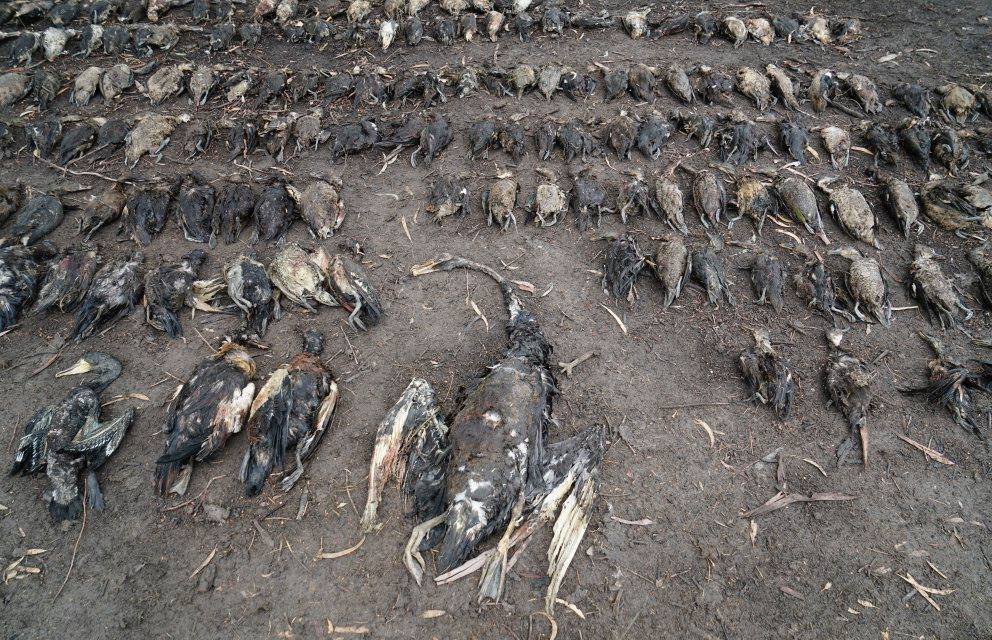
Collateral damage
Duck shooting is responsible for the deaths of non-target protected and threatened species each year. Given the issues identified with the enforcement abilities of the game management authorities, and the inherent logistical difficulty with policing gunfire, shooting of non-game species invariably occurs. At least 260 protected species were killed during the 2017 opening season at Koorangie and many more injured, including Freckled Ducks, Australia’s rarest waterfowl, endangered in Victoria, and species which are not ducks at all. The Freckled Duck appears exceedingly similar to the game species, the Pacific Black Duck, in silhouette form, and disturbingly, hunting is routinely permitted in the poor visibility conditions before sunrise and after sunset, contributing to the risk of accidental shooting and demise of the species.
Hunters are required to sit the Waterfowl Identification Test prior to being granted their duck shooting licence in Victoria, though this multiple choice test is only required to be passed once for a hunter to be active indefinitely, requires only an 85% pass rate, and is not reflective of real world conditions. This being said, regardless of whether a species is protected or not, the suffering experienced by game species is no more justifiable than if they were protected.
Despite ongoing claims of legitimacy and ethics, a hunter knowledge survey commissioned by the Game Management Authority itself in 2019 exhibited a disturbingly low knowledge base regarding basic duck hunting principles: only 37% of the sample population could correctly answer a question about minimising wounding, only 20% correctly on game duck identification, and a shocking 13% correctly on appropriate dispatching of downed ducks.
Financially unjustifiable
An investigation in 2013 placed the value of duck hunting in Victoria (in terms of Direct Gross State Profit) at $43 million. The total financial impact across all types of hunting in the state came to $439 million, making it worth only 0.13% of the Victorian economy. Furthermore, this document was reviewed by an independent behavioural economist in 2016, which pointed out numerous flaws with the original report and debunked many of its findings. This makes the economic benefit of hunting, the main reason governments claim it is beneficial, highly questionable, especially when weighed against its negatives.
Ecotourism is a rapidly growing industry worldwide, with birdwatching in particular extremely popular. The Australian industry is estimated to be worth $1.6 billion in annual revenue. Tourists hoping to share in the splendour of the Australian wetlands are understandably deterred when active hunting is taking place. This deprives rural communities of the tourism revenue and goodwill associated with birdwatching and ecotourism. Regional Victorians Opposed to Duck Shooting Inc. advocates in this area, drawing attention to this injustice, and the unfairness of the sanctioned slaughter happening in their backyard, to their local birds.
Mental and physical health
In the wake of the deadly 2019-2020 bushfires experienced by Australia, communities banded together to support one another and our native wildlife. The last thing many wanted to happen was further desecration of native species.
Sadly, all Australian states with an annual duck hunting season proceeded to declare 2020 shooting could go ahead. These distressing decisions cater to the minute proportion of the population which are shooters, while ignoring the mental strain and will of the remainder of the population. A Morgan Poll conducted in 2007 found an overwhelming majority of Victorians think duck shooting should be banned, and subsequent polls have shown similar results, demonstrating how meaningful native birdlife is to the majority of Victorians. This grimly does not seem to factor into government decisions at all, pandering to the hobby of a few while ignoring the many.
While the mental strain of knowing recreational slaughter of native animals is occurring is stressful enough, these concerns are even more tangible for the dedicated volunteers committed to being present during the season. Volunteers from the Coalition Against Duck Shooting and other welfare organisations attempt to warn ducks away from shooters’ guns, rescue wounded birds and bring them to shore for triage by veterinary volunteers, and importantly, provide additional monitoring of shooter behaviour and draw it to the attention of authorities.
Physically watching the carnage that occurs on the wetlands and striving to save lives, with exposure to traumatic injuries and stressed animals, leads to mental anguish and compassion fatigue. The cost of rescue supplies, medication, and transport of injured birds after triage for the lucky few who don’t require immediate euthanasia are all worn by the volunteer rescue effort. While the mental health benefits of shooting to those involved is often touted, the converse poor mental health of those left picking up the pieces is perpetually ignored.
Children wielding guns
It is often overlooked that hunting licences can be granted to children, as young as 12 years of age in Victoria. This is beyond the age at which a lot of children can grasp the implications. An example that exemplifies this was the shooting of a rescuer in the face as a result of inappropriate gun use by a 14-year-old boy in 2011.
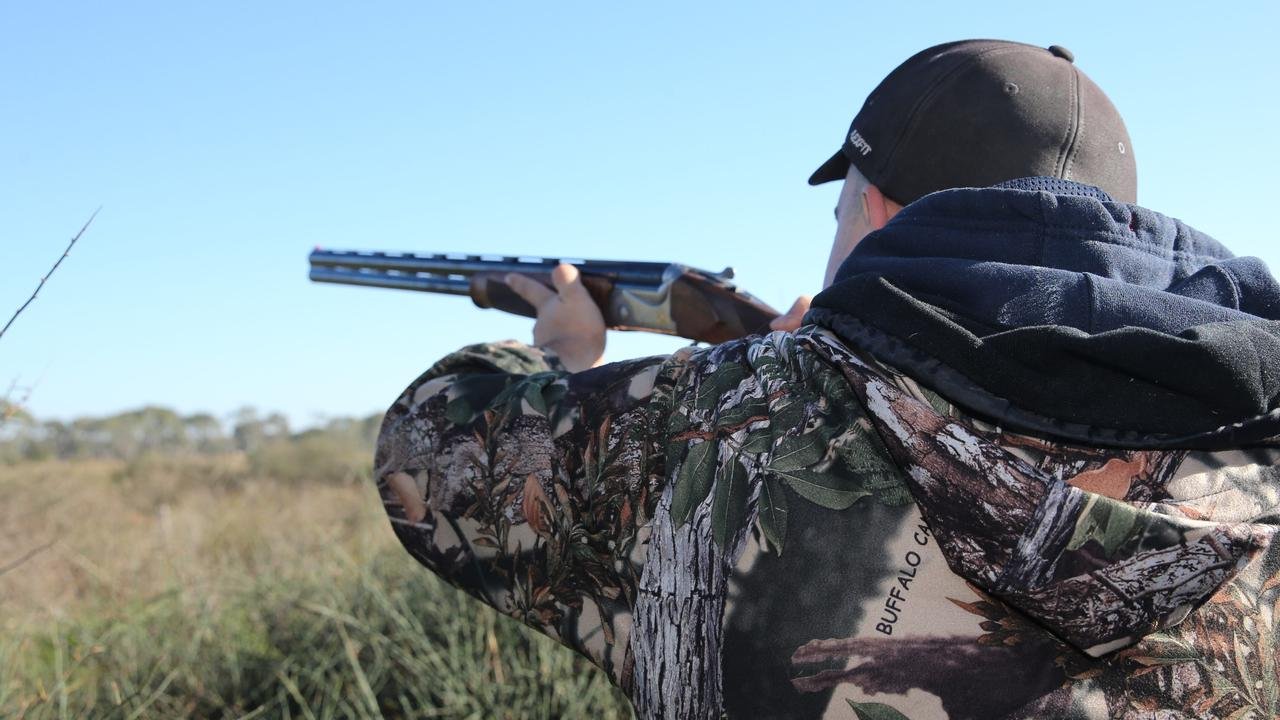
Despite hunted ducks purportedly being taken for consumption (despite the previously outlined evidence that this is definitely not always the case), there is a range of significant disease risks to human health associated with this practice. Further pressure to call off the 2020 season in Victoria was related to contamination of birds with the industrial chemical PFAS, which could cause toxicity in humans eating affected birds. Ongoing disease risks include botulism, blue-green algae poisoning, and the theoretical risk of avian influenza, and, as has been more pertinent recently, Japanese encephalitis virus.
A ‘legitimate’ activity?
While hunters commonly claim that they hunt to “feed their families”, this is a difficult claim to justify when so many birds are wounded and left discarded rather than utilised as a food resource. The “sport” is much more appropriately seen as a recreational activity rather than as a food-producing one, especially given the expense involved in organising a hunting trip, equipment, etc.
An additional claim is that hunters are “Australia’s most surprising conservationists”, with Field and Game Australia proudly advertising the importance of hunter-led conservation projects. However, excepting wetlands which are owned and managed by hunting bodies, all formal wetland management falls to the site manager/owner of the wetland, State and Federal Governments, with no obligation for hunters to contribute per se.44 With an annual duck shooting licence in Victoria costing less than $60,45 $33 in Tasmania, and a mere $20 in the Northern Territory, there is also no revenue generated from the licencing process to contribute to conservation purposes.

It doesn’t have to be this way
Duck shooting has long lost its social license, and a majority of the wider community support a ban on the supposed sport. The best way to help make such a ban a reality is to support the Coalition Against Duck Shooting’s campaign. They have plenty of positions for volunteers to help native waterbirds during shooting seasons, as well as calls to action, which most members of the public can take part in from home too.
Make the pledge to become a Wildlife Defender today!
Each of us have incredible power to create meaningful change - let’s use it. You can play an important role in the protection of Australia’s unique wildlife. Take the pledge to become a Wildlife Defender today and join a growing community of people defending the wild.
